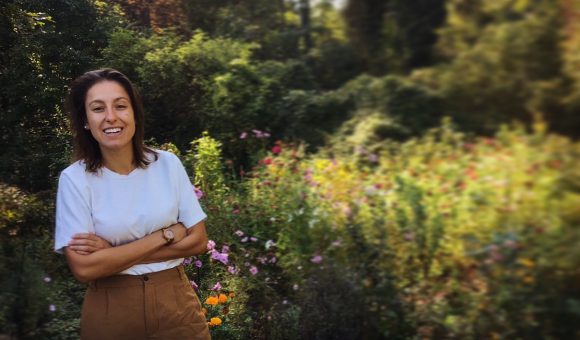
Camila Ludovique – personal archive.
By Camila Ludovique, research assistant CAPES/IIASA Sandwich Doctorate
I come from Brazil, more specifically from the Energy Planning Program of the Federal University of Rio de Janeiro, that postcard city that most of you may have already seen in pictures, with gorgeous mountains beside the ocean, the sunsets…
But, on the ground we have many problems, as do all the major cities in the developing world, including a high increase in the population, about 11 % in the last decade, who require transport services work, housing, leisure and happiness.
However, higher than the increase in Rio’s population was the increase in its automobile fleet, around 110%, to supply the demand for transport in the city. The result: immobility, traffic jam, environment degradation and loss of quality of life. Then, one day I realized: something needs to be done to transform the business-as-usual scenario!
I started to wonder, how can we develop a society that is more sustainable? How can the transport passenger sector play its role in the decarbonization of economy? Moreover, how can we answer these questions?
By building mathematical models, which try to simulate the real dynamic of full economies, to assess different strategies towards a low-carbon transport system. In this way, we can try to help politicians to understand the emissions problem in a quantitative framework. We can build a dialogue, supported by numbers and evidence on the effectiveness of different policies, measures, and actions to reduce CO2 emissions from the transport sector.
Articulating this complex issue in the context of mathematical language allows us to expand the boundaries of our mental models and ideas, define them and generate scenarios to figure out what that means in practice. The models will not give us the answer – all models are wrong – but they will give us insights that improve our mental models and the mental models of all the people who need to be involved in order for change to happen, so that people are empowered with effective policies with good leverage to go out there and make a difference. This is what makes some models useful.
And that is why IIASA appears in my life…
Choosing IIASA
Here at IIASA we have researchers and expertise from all around the world, allowing us to develop mathematical models to transform science into actions and to achieve better levels of sustainability in our world.
Being a little bit more technical, there are many examples of how and where emissions from transport have been accounted for through modelling approaches, but, roughly, we can say that there are main two types of models – the top-down and the bottom-up approach.
The bottom-up approach builds the model through more desegregated data. This means, for example, that you can differentiate the emissions pattern between the weeks and the weekends, so you can have a better understanding of the behavior and activities of human beings inside your model, which leads to more realistic outcomes.
The top-down approach uses more aggregated levels of indicators, such as the average distance in kilometers traveled per capita of a country in a year, known as PKT in the transport sector. This is just one value to represent the whole population, which doesn’t allow us to see very detailed patterns of human activity, but it allows us to see much further, around the whole globe, and compare how each region may evolve. On the other hand, the bottom-up approach cannot see a big region without losing the capabilities of a desegregated model.
I used to say that one is myopic and the other has astigmatism. How can we solve this dilemma?
Working with both… and that is why IIASA benefits me
The institute has an important and famous top-down model, the Model for Energy Supply Strategy Alternatives and their General Environmental Impact, better known as MESSAGE. It which provides core inputs for major international assessments, such as the IPCC, and here I am – in this castle in Europe, learning how to model in a global scale.
Besides that, I am also developing a bottom-up model that applies big data to assess the urban passenger emissions in Rio de Janeiro, creating a tool that seeks to answer how we can achieve the transition paths to reduce the carbon footprint of the transport sector, and how much it will cost. This will help my country develop strategies towards sustainable mobility and a better quality of life for Brazilians who live in Rio de Janeiro, or those who travel to that wonderful city.
Why apply for the IIASA doctorate program?
IIASA is not in Vienna itself, it is in Laxenburg, a small village south of Vienna, which means if you want to live in the city, you must travel. But, if that is not a problem for you, I really would recommend IIASA for you!
IIASA has good infrastructure, and there are great people from all over the world, all friendly. There are many activities in the summer time, that even offer free beer! There is also the mountain club, the music club, a great park to run in, or walk in, which is full of nature. For sure, it is a good place to live and finalize your long life of studies. Come to make part of this history.
Applications for the 2019 IIASA-CAPES Doctorate Sandwich Program and Postdoctoral Fellowship Program opened on 1 September 2018 and will run until 15 October 2018. Candidates have to apply to both CAPES (on the CAPES website) and IIASA. Successful applicants will be informed of the selection results by mid-December 2018. Selected candidates are expected to take up their position at IIASA between March and October 2019.
Note: This article gives the views of the author, and not the position of the Nexus blog, nor of the International Institute for Applied Systems Analysis.

You must be logged in to post a comment.